Compositing
Method
One compositing method can be applied to all Numeric fields and another method can be applied to all Character fields.
Compositing methods for Numeric fields
WEIGHTED AVG
The average of all the intervals in the source file that are included in the Output file interval, weighted according to one of the following:
- the Length included in the Output file interval
- the Length x Density included in the Output file interval
- the Density included in the Output file interval
AVERAGE
The average of all the intervals in the source file that are included in the Output file interval.
FIRST
When you set the method to FIRST, the value from the first interval in the source file that includes any part of the output file interval will be used.
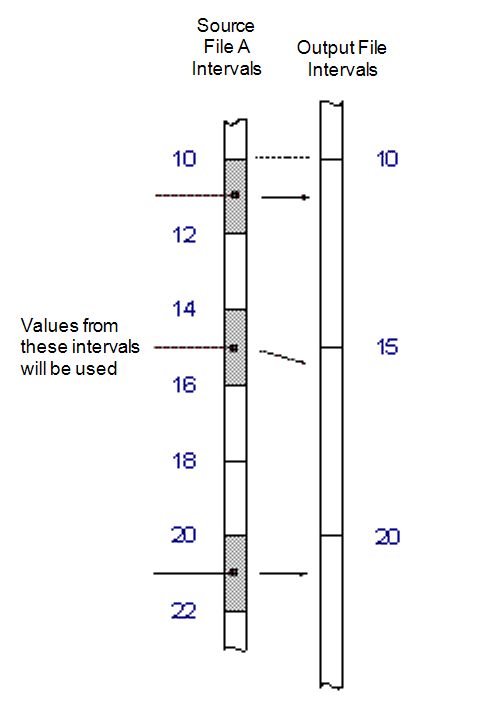
LAST
When you set the method to LAST, the value from the last interval in the source file that includes any part of the output file interval will be used.
MIDDLE
When you set the method to MIDDLE, the interval that contains the middle value of the target interval (150 in the following example) will be used:
If two intervals are the same distance from the mid point, or the mid point is an interval boundary, then the first of these intervals is used.
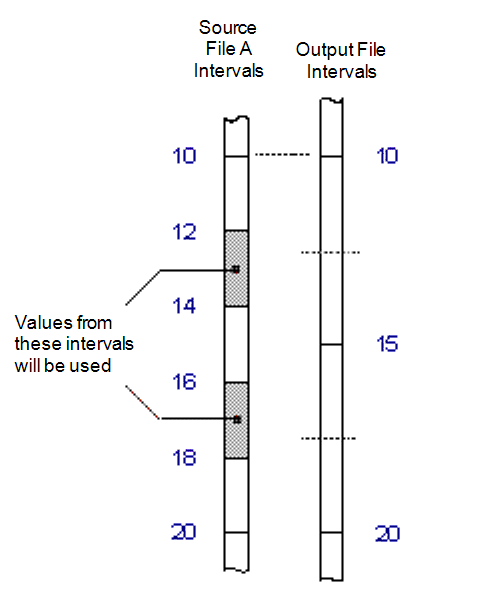
MIN
When you set the method to MIN, the minimum value from the intervals in the source file that includes any part of the output file interval will be used:
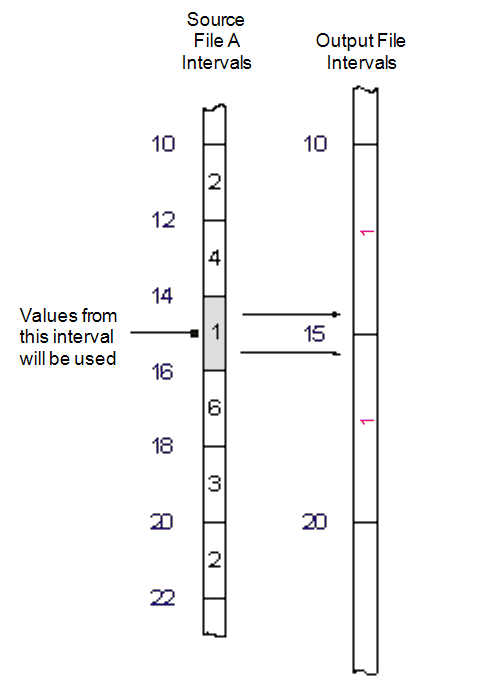
MAX
When you set the method to MAX, the maximum value from the intervals in the source file that includes any part of the output file interval will be used:
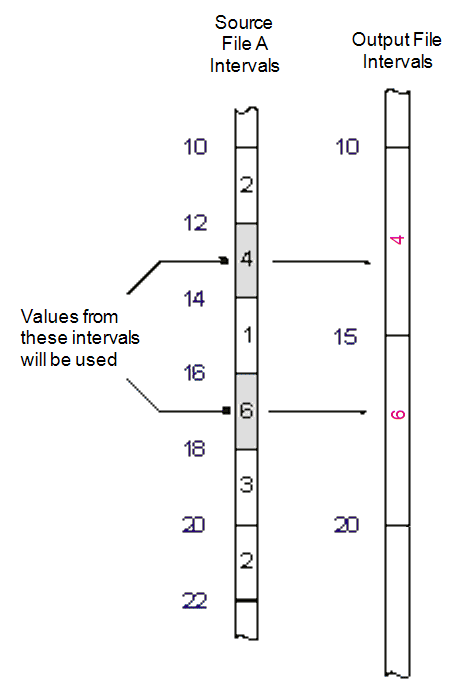
WEIGHTED SUM
When you set the method to WEIGHTED SUM, the sum from the values in the source file are multiplied by the interval. Intervals that include any part of the interval in the output file will be used.
In the following example
Values from the 10-12, 12-14 and 14-16 intervals will be used to calculate a value for the 10-15 interval in the output file.
Values from the 14-16, 16-18 and 18-20 intervals will be used to calculate a value for the 15-20 interval in the output file.
Because interval 14-16 is halfway between the 10-15 and 15-20 intervals in the output file, those values are weighted by halves:
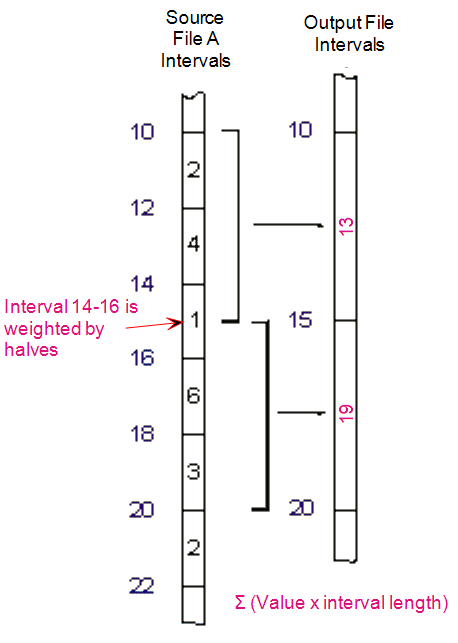
BLANK
The field is left blank.
IGNORE
The field does not appear in the output file.
Compositing methods for Character fields
The methods FIRST, MIDDLE and LAST operate in the same way for Character fields as they do for Numeric fields.
FIRST
The value of the first interval in the Source file that includes any part of the Output file interval.
LAST
The value of the last interval in the Source file that includes any part of the Output file interval.
MIDDLE
The value of the interval in the Source file that includes the mid point of the Output file interval. If no interval contains the mid point (missing interval), then the interval closest to the middle is chosen. If two intervals are the same distance from the mid point, or the mid point is an interval boundary, then the first of these intervals is used.
BLANK
The field is left blank.
IGNORE
The field does not appear in the output file.
DOMINANT
Within the output file interval, the sum of the lengths of each unique character interval are compared. The value with the longest sum is chosen. If several intervals have the same length, the one that occurs first is selected.
In the following example:
The length of "A" is: 6 (2 + 3 + 1).
The length of "B" is: 4.
Therefore the dominant value is "A".
If there is no dominant value, the first occurrence is selected.
In this example "A" would be selected.
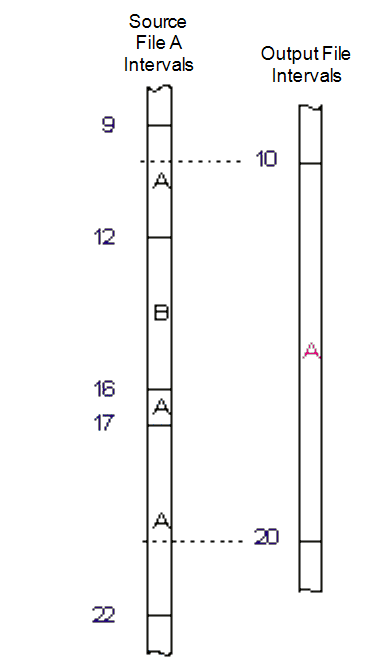
For more information, refer to the Apply different compositing methods topic.